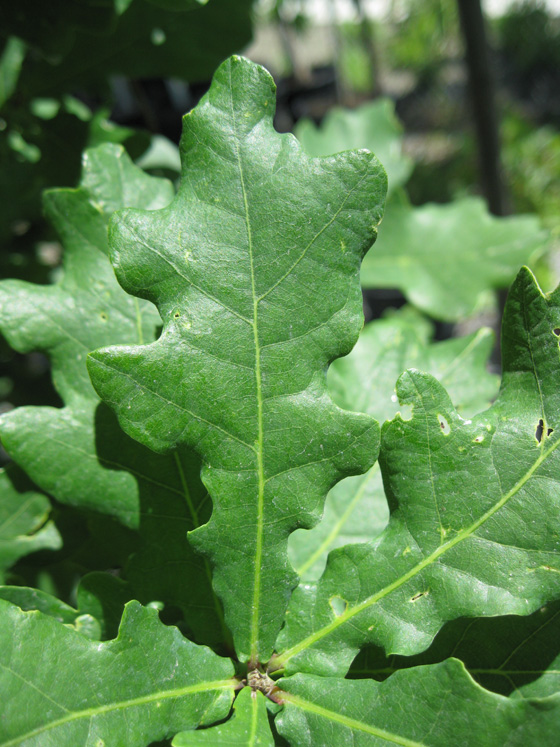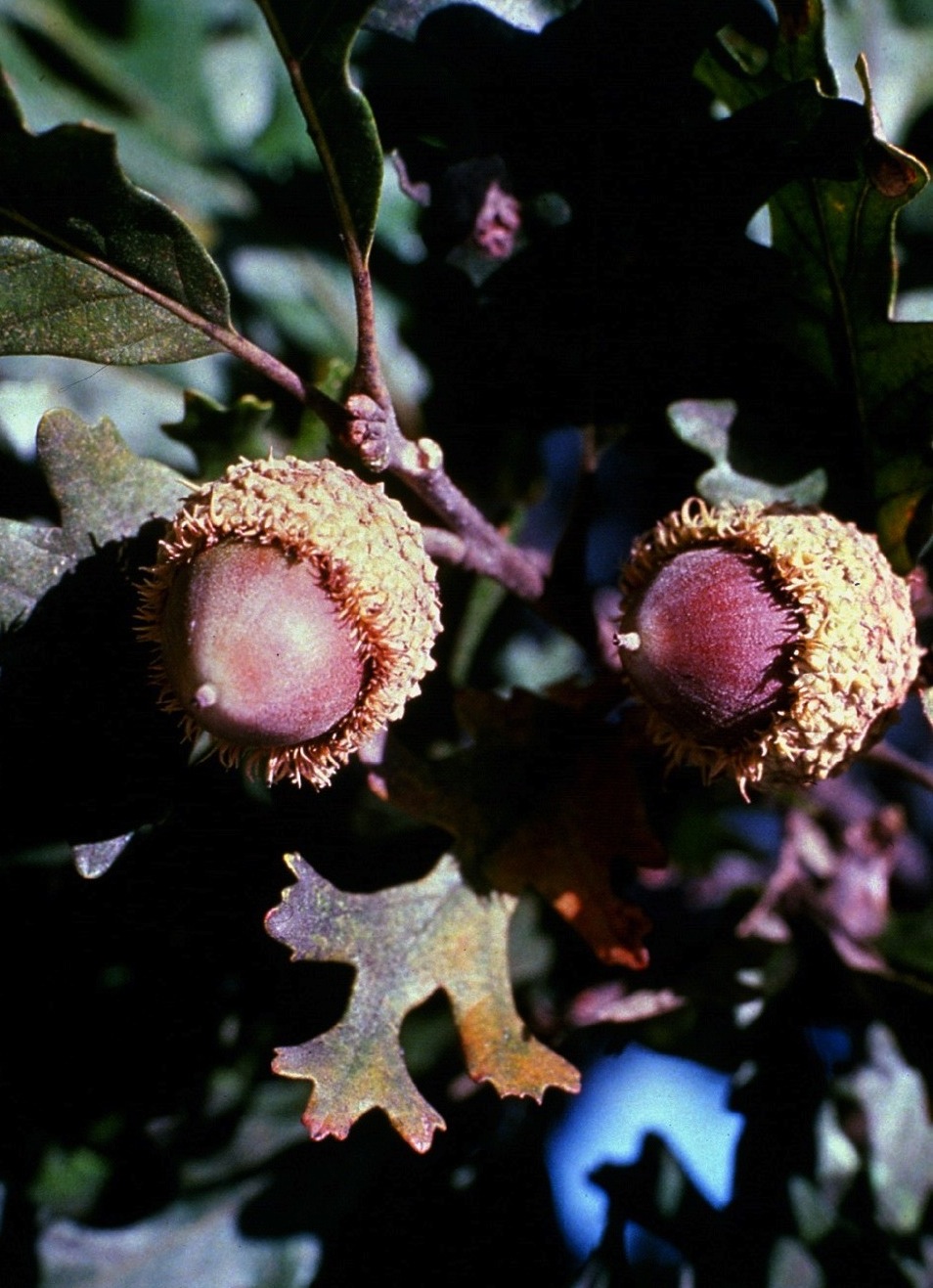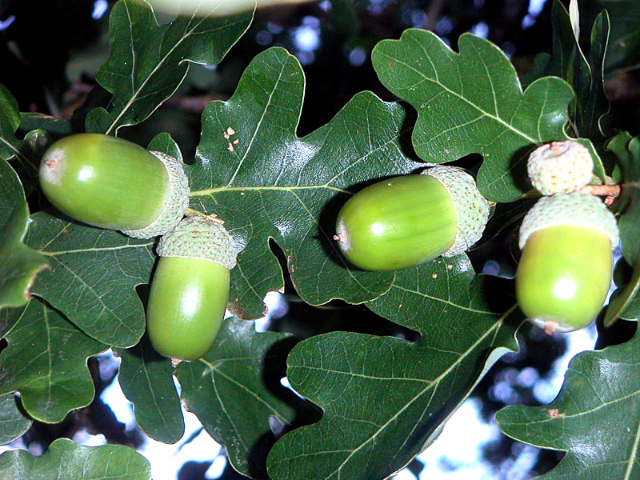| PSC 2620: Woody Trees and Shrub | Course Home | Study Materials |
Quercus Species Comparisons
This page is intended to help you become more familiar with the different Quercus species. Here you can quickly compare the different species to better learn the distinguishing characteristics of each.
Leaf
 |
 |
| Quercus gambelii - The leaf is 3-6 inches long, obovate in shape and has 5-9 deep and irregular lobes. The leaf is a dark glossy green and thick and leathery. | Quercus macrocarpa - The leaf is 4-10 inches long and obovate in form with very irregular rounded lobes. |
 |
|
| Quercus robur - The leaves are 2-5 inches long and have the classic oak leaf form. |
Fruit
 |
 |
| Quercus gambelii - The acorns are elongated and two-thirds of the nut is covered by the involucre. | Quercus macrocarpa - The acorns form in clusters and are 1/2 - 1 inch long. One-half of the nut is covered by the involucre. |
 |
|
| Quercus robur - The acorns form in clusters and are 1/2 to 1 inch long and elongated in shape. The involucre covers less of the nut than in the other Quercus species. |
Bark
 |
 |
| Quercus gambelii - The bark is gray-brown in color and has ridges and furrows. Young bark is smooth and dark red in color. | Quercus macrocarpa - The bark is gray brown and very rough, with many deep furrows and ridges. The mature bark forms quickly, even on young branches. |
 |
|
| Quercus robur - The bark is deeply furrowed and gray-brown in color. |
Form
 |
 |
| Quercus gambelii - It grows 10-25 feet tall with the width slightly narrower. The form is very irregular. Image: Cory Maylett | Quercus macrocarpa - The tree grows 50-70 feet tall with a similar spread. It has a rounded form. |
 |
|
| Quercus robur - It grows 50-70 feet high and wide and has a good broad, rounded form and a clean branching pattern. |